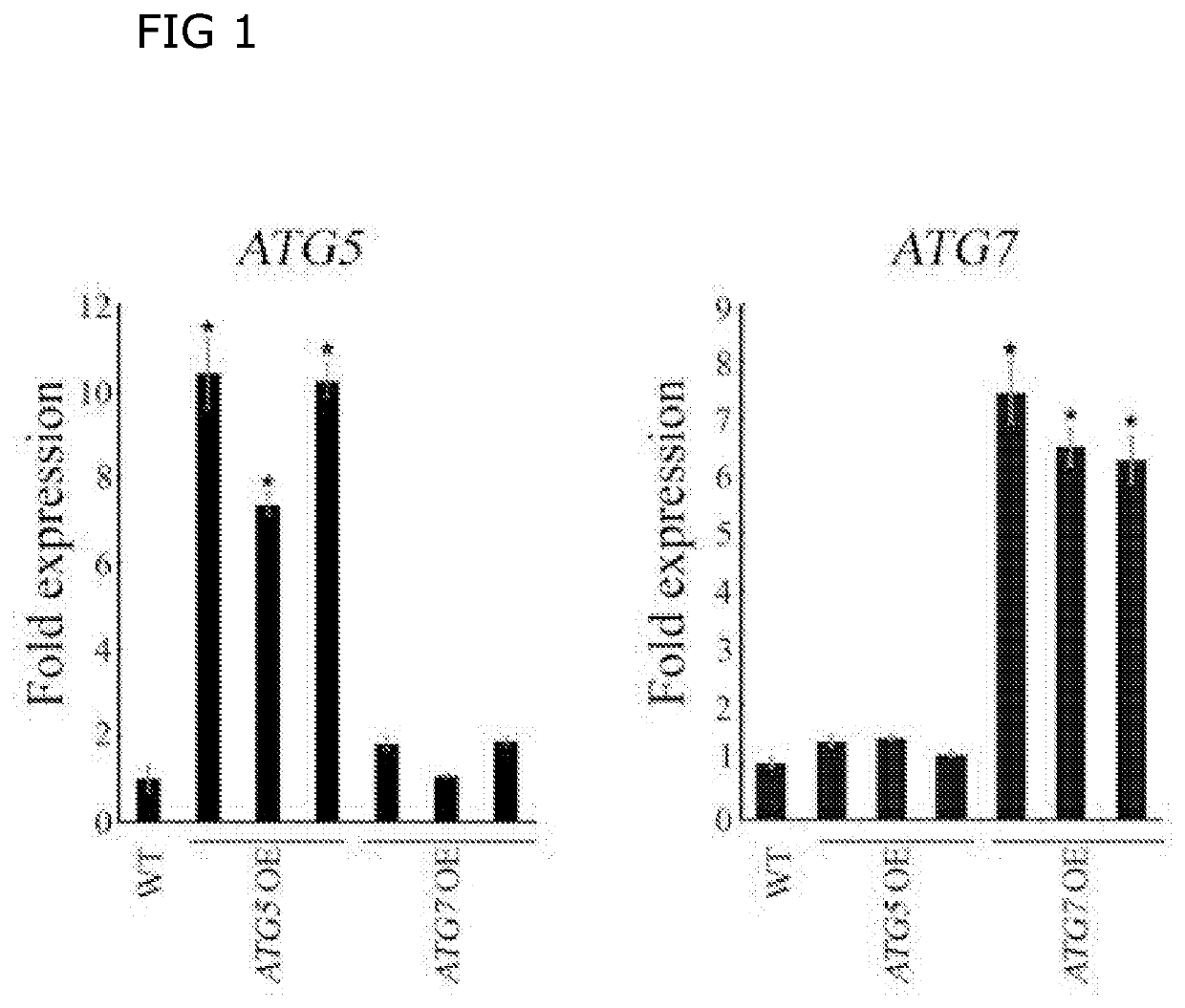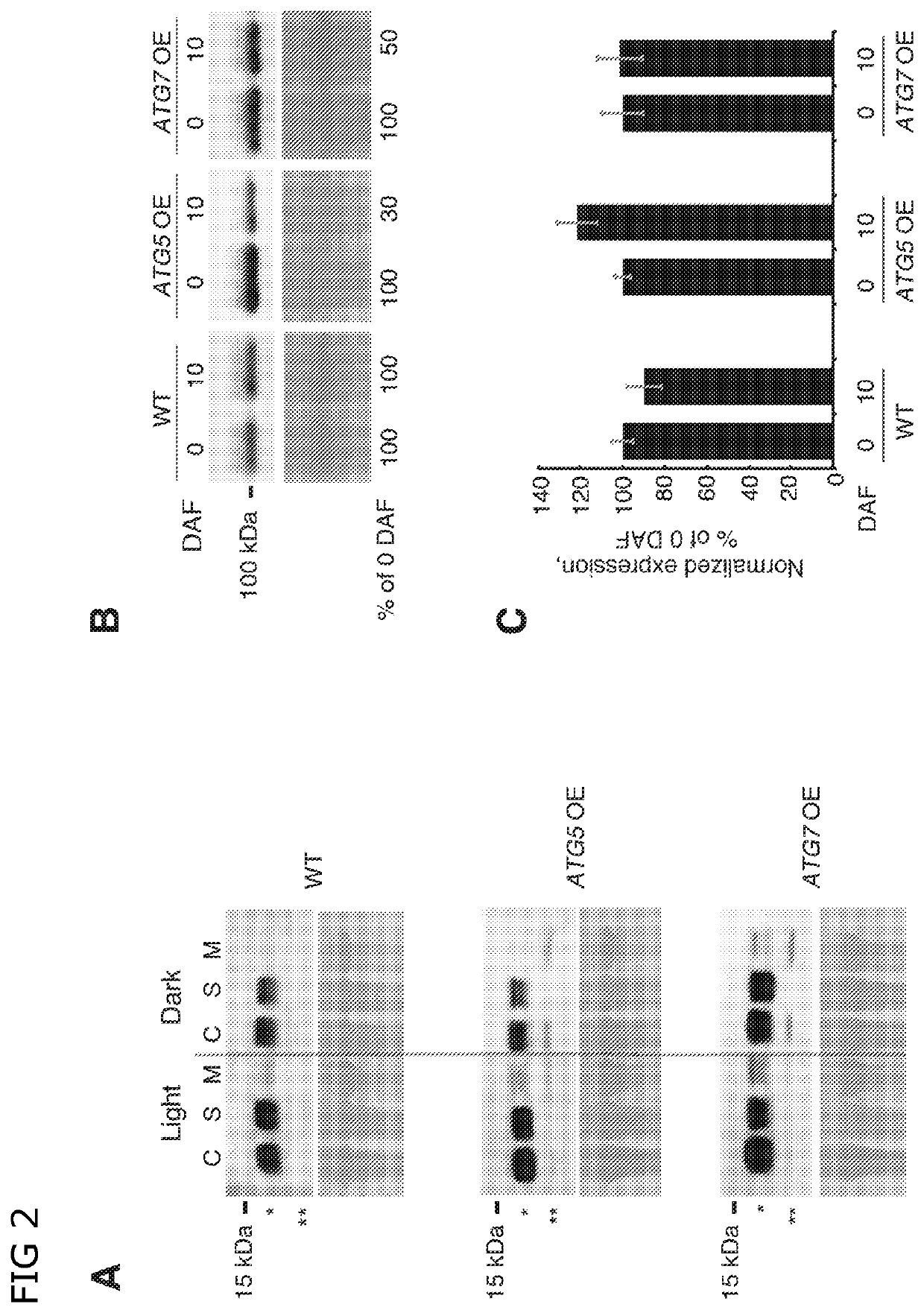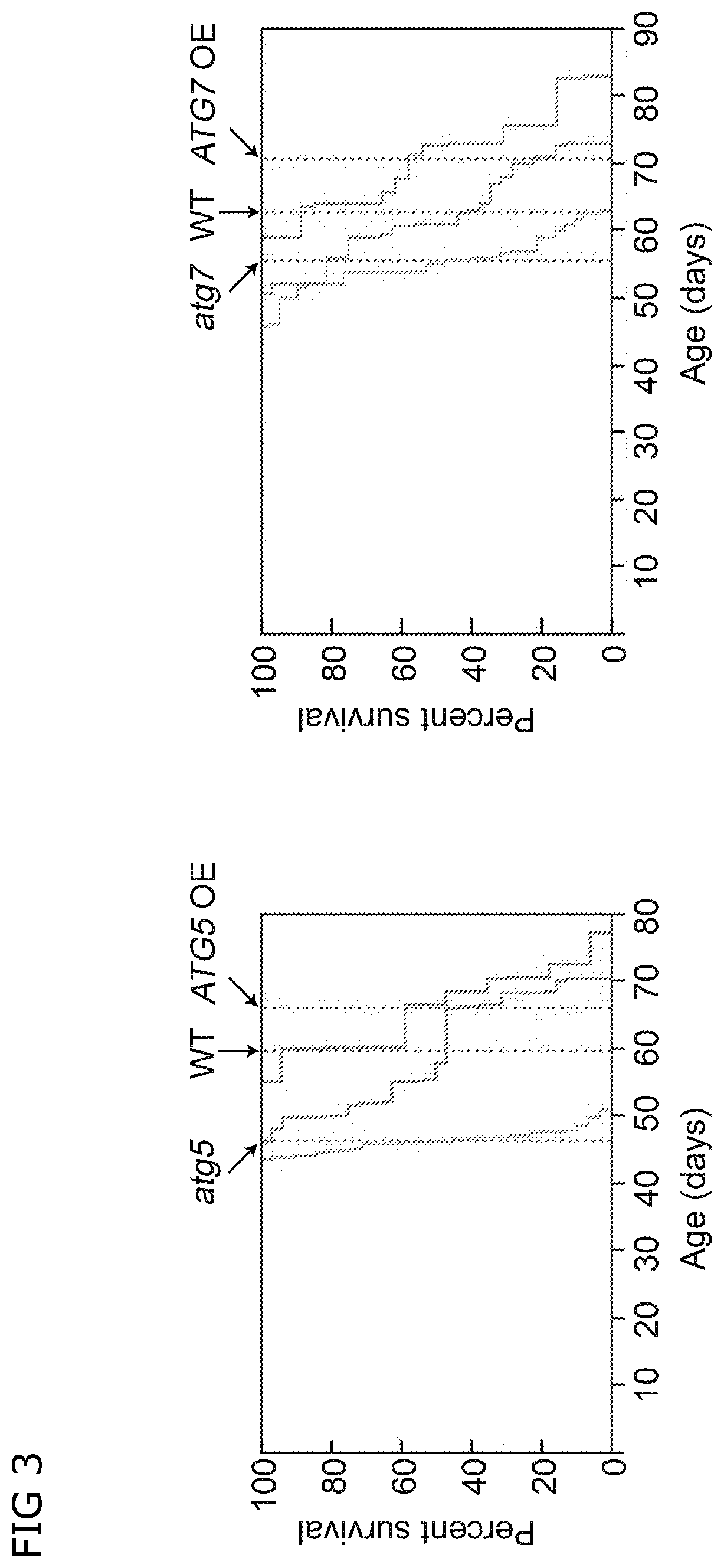Transcriptional stimulation of autophagy improves plant fitness
a transcriptional stimulation and plant technology, applied in the field of transcriptional stimulation of autophagy, can solve the problems of increasing the cost of autophagy process energy, reducing the efficiency of the autophagy process, so as to increase the expression, increase the expression, and increase the expression
- Summary
- Abstract
- Description
- Claims
- Application Information
AI Technical Summary
Benefits of technology
Problems solved by technology
Method used
Image
Examples
example 6
Identification, Alignment and Structural Annotation of a Plant ATG5 and ATG7 Protein Families
[0148]A search, conducted in the phytozome database (http: / / phytozome.jgi.doe.gov), reveals that ATG5 genes, as well as an ATG7 genes, are present as single copy ortholog genes in most plant genomes. This is strong evidence for the essential role of each of these genes in plants. Members of each ATG protein family and their respective domains were aligned using ClustalX version 2, Larkin et al. 2007. Additional plant ATG 5 and ATG7 orthologs are found by a BLAST search; such as in the Phytozome database. For example, the following steps: select Brassica rapa FPsc v1.3, use BLAST, select Target type: Proteome, remove tick Filter query, then GO, leads to only one gene that is identified as Brara.B02857.1 having 91% amino acid sequence identity to the search query.
[0149]6.1 the Plant ATG5 Protein Family
[0150]An amino acid sequence alignment of ten members of the family of ATG5 proteins is shown...
example 8
Transcriptome Analysis
[0156]To further investigate possible molecular mechanisms underlying the above-described phenotypes of the ATG-overexpressing (OE) plants, we performed complete transcriptome analysis of rosette leaves at two developmental stages. The leaf material was sampled at the budding stage, when no difference in phenotype of wild-type, atg knockout (KO) and ATG-overexpressing plants was detectable. The second sampling was performed ten days after the first flower opened, at the stage when atg knockout plants showed early signs of senescence and differences between wild type and ATG-overexpressing plants became detectable on molecular level (NBR1 degradation, confirmed by Western blot and qPCR).
[0157]Expression of each transcript at each time point was firstly normalized to the corresponding values in the wild-type genetic background, after that transcripts were further sorted to select those with similar expression trends in both atg knockout or in both ATG-overexpress...
PUM
| Property | Measurement | Unit |
|---|---|---|
| temperature | aaaaa | aaaaa |
| pH | aaaaa | aaaaa |
| pH | aaaaa | aaaaa |
Abstract
Description
Claims
Application Information
 Login to View More
Login to View More - R&D
- Intellectual Property
- Life Sciences
- Materials
- Tech Scout
- Unparalleled Data Quality
- Higher Quality Content
- 60% Fewer Hallucinations
Browse by: Latest US Patents, China's latest patents, Technical Efficacy Thesaurus, Application Domain, Technology Topic, Popular Technical Reports.
© 2025 PatSnap. All rights reserved.Legal|Privacy policy|Modern Slavery Act Transparency Statement|Sitemap|About US| Contact US: help@patsnap.com



